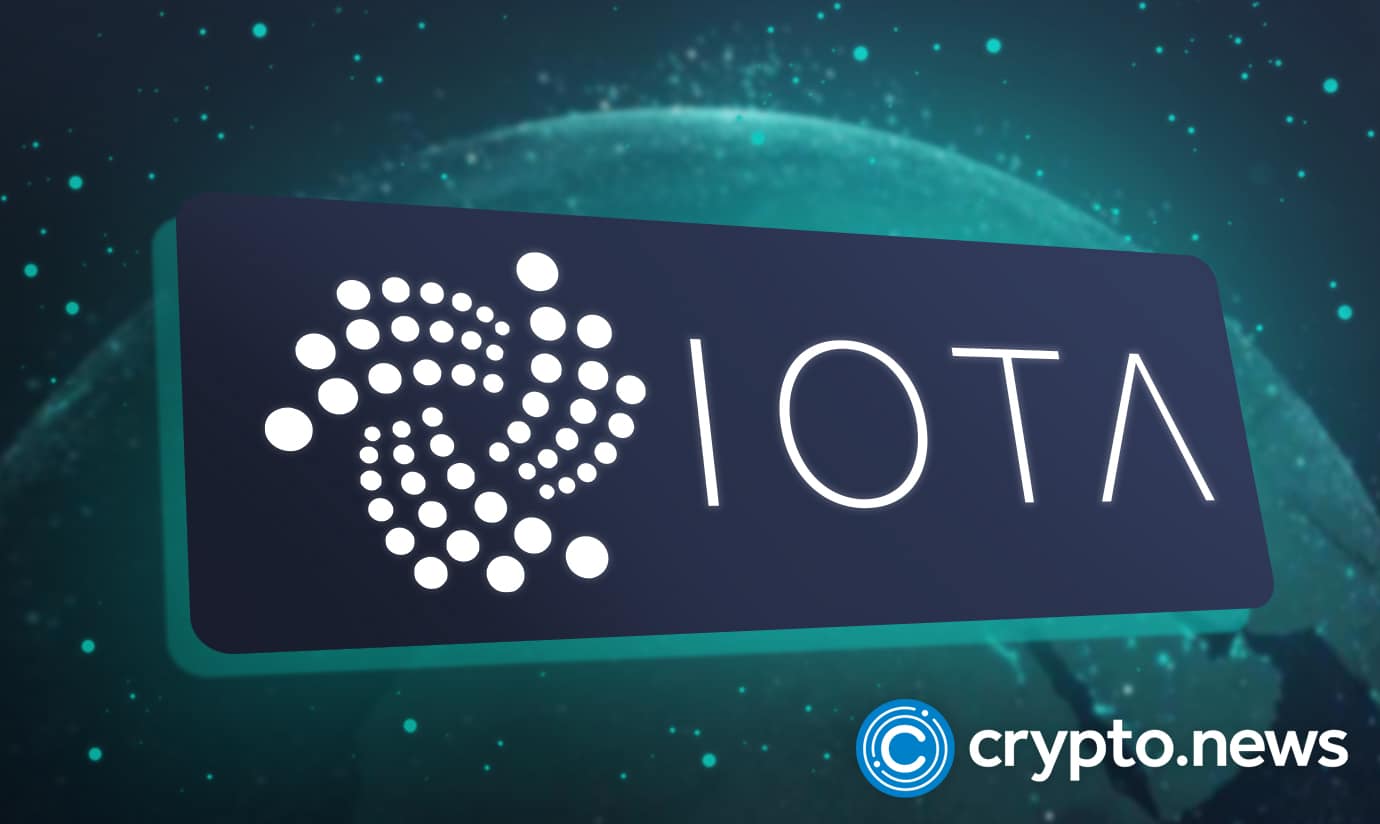2020-8-23 14:15 |
IOTA is working on expanding its market opportunities by taking on a more pragmatic approach towards the development of its technology. However, the team has yet to overcome the critical issues plaguing the project.
The major roadblocks for IOTA’s evolution include centralization, lack of commercial use cases, and a small ecosystem. Moreover, the team may soon run out of money, and one of the co-founders is bent on emptying what little is left of the coffers.
It’s a sink-or-swim moment for IOTA, and now is the time for the team to prove itself.
Making the IOTA Technology WorkIOTA began in 2015, when the Internet of Things (IoT) market, IOTA’s key business vertical, was in its infancy.
Five years later, the IoT space is growing much faster, and critical infrastructure is actively being built. Hence, IOTA’s adoption prospects are only going to increase.
To capitalize on the expanding opportunities, IOTA has to provide practical working solutions to enterprises and organizations. Previously, this was a problem, given the team’s focus on fringe innovations like ternary logic, which, to this day, isn’t fully embraced by hardware producers.
In 2020, however, the project has made moves to prioritize conventional software development.
Without casting aside innovative ideas, the team focused on improving the usability and efficiency of the current version of the Tangle. The improvements like faster transactions, automatic connection to neighboring nodes, and reusable addresses are coming to the mainnet with Chrysalis, an interim update before the network’s decentralization event, Coordicide, occurs.
Although the team has yet to provide users with concrete timeframes, it has offered a degree of transparency via a live version of the roadmap and frequent updates on social media. The release of Coordicide specifications and the launch of the IOTA 2.0 testnet indicate the team’s determination to deliver a working product as soon as possible.
The team’s dedication is visible on GitHub. GoShimmer node software, which is a crucial element of Coordicide, has seen an uptick in development activity in 2020.
Additions and deletions in the GoShimmer repository. Source: GitHubStill, Coordicide is not a new concept, and it was announced a while ago.
Since then, there has been no deadline for its implementation. The negative feedback on the development process from a former member of IOTA’s former Developer Advocate of the Ecosystem team, Philipp Blum, elevates concerns.
Overall, the fact that the team prioritized conventional development practices over innovating, for the time being, is somewhat promising.
Given that the project spent years on research, issues with changing internal politics shouldn’t come as a surprise. It’s more important that the team is beginning to deliver working solutions.
IOTA Foundation Running Out of MoneyThe spike in the team’s activity is dictated by the depleting financial resources of the IOTA Foundation. For now, the Foundation has slightly over 59.6 Trillion MIOTA (Ti) tokens valued at $23.8 million at current prices.
Over the past year, the project’s average monthly burn rate was 4.6 Ti. At such a rate, IOTA Foundation has until August 2021 before it runs out of its crypto holdings.
Actual (blue) and projected (grey) MIOTA holdings of the IOTA foundation. Source: TheTangleThere is an Ecosystem Development Fund, and some cash might still be left from the initial €1 million ($1.17M) endowment from the co-founders. Considering how much the team spends, however, these sources aren’t enough to alleviate the risk.
The crypto market’s crash in March 2020 worsened the situation. Although IOTA followed the altcoin bullish trend, the price has recovered to its pre-crash levels in August. Meanwhile, the Foundation was cashing out at a discount.
MIOTA (blue) vs. total altcoin (red) market cap. Source: CoinGeckoOne of IOTA’s co-founders, Sergey Popov, told Crypto Briefing that the project also gets funding from some companies and government agencies.
Although Popov couldn’t share the exact percentage share of grants versus token liquidations, he stated that the inflows from partners are substantial.
Meanwhile, the team strives to expand its partnership network and secure more financing. Recent initiatives include creating Tangle EE, a working group for organizations to develop enterprise-grade solutions with Dell Technologies and STMicroelectronics.
The major predicament with the partnerships may come from the lengthy enterprise development cycle. The project has to boost its commercial adoption to increase cash flows, but launching products for enterprises can take months or even years. It’s a common practice, but IOTA doesn’t have much of a runway to be comfortable with the wait.
The risk of the IOTA Foundation going bust is exacerbated by the tensions between the project’s co-founders.
Sergey Ivancheglo, one of the former members of the Board of Directors and IOTA’s co-founder, shared pictures of a letter to the IOTA Foundation, where he asks the team to transfer over 80 Ti to his wallet, which means almost all of the project’s crypto holdings.
IOTA has a long history of the core team’s internal conflicts. Ivancheglo’s seemingly peaceful departure from the project’s Board of Directors in July 2019 turned into a heated confrontation between him and IOTA founder, David Sønstebø.
Ivancheglo’s letter was sent from a Minsk based law firm. If he were to file a lawsuit and win, the IOTA Foundation would be in a tough position. Even if he doesn’t, the reputational damage is not small.
In either case, IOTA suffers because it’s still centralized in the hands of quarreling founders.
Decentralization Means Unstoppable ProgressInitial centralization is a consequence of IOTA’s architecture. Without the centralized node called “Coordinator,” the network could be abused by malicious actors.
While the team aims to kill the Coordinator, it’s still functioning, meaning that the IOTA Foundation still has full control over the Tangle. The latest incident with the project’s official wallet, Trinity, shows the negative impact of this.
Trinity had a critical vulnerability, as it shared users’ private keys with a third-party payments platform Moonpay. The vulnerability was eventually exploited, and hackers stole between $300,000 and $1.2 million in MIOTA.
Due to the hack, the Foundation paused financial transactions on the network for almost a month. Hence, if anything happens to the IOTA Foundation, the system may lose some or all of its functionality. This turns the Foundation into a significant single point of failure.
Since IOTA’s major risks are connected to the Foundation, the best course of action would be to distribute control over the Tangle between large, reputable entities.
It’s a reasonable step for an enterprise-focused project, which can be seen via examples like Hedera Hashgraph.
Decentralization through businesses and governments could remove not only the central point of failure but also foster the growth of IOTA’s ecosystem. Node owners would also benefit from pushing IOTA’s adoption among their large user bases.
Still, to achieve the above, the Coordicide must happen, and the Foundation has to step down as the entity controlling the network.
It involves both rapid software development and the professional approach of the core team.
The Chance of Failure Runs HighDespite the positive shifts in IOTA’s strategy, the project still has to overcome significant obstacles. It’s pressed for time, and the cost of error is high. IOTA still has a chance to make it through, considering the team’s approach. But this chance is diminishing by the day.
Similar to Notcoin - Blum - Airdrops In 2024
IOTA (IOTA) на Currencies.ru
|
|










